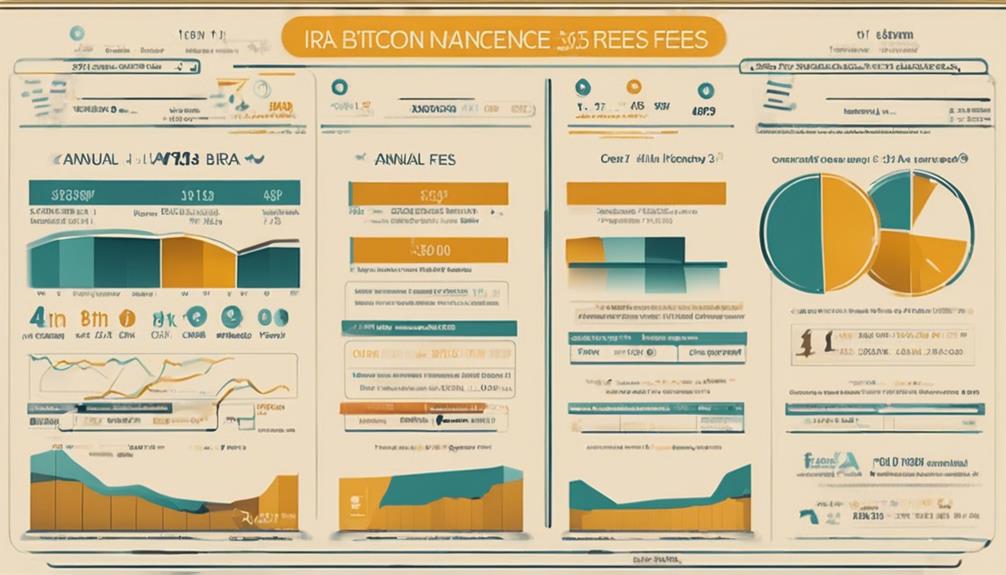Bitcoin has surged back above $119,000, showing strong resilience despite recent economic shocks. Market fluctuations remain sharp, but overall, the trend stays bullish with higher highs and lows. Institutional investors continue to support Bitcoin as a hedge against inflation, boosting demand. While volatility persists, Bitcoin’s core momentum remains firm, especially with macroeconomic uncertainties fueling interest. If you stay tuned, you’ll get even more insights on what drives these recent moves and what’s next for Bitcoin.
Key Takeaways
- Bitcoin rebounded above $119,000 after brief dips, fueled by institutional demand and macroeconomic uncertainties.
- Price volatility remains high, with swings around $114,300 to $127,100, but the overall trend stays bullish.
- Market cap stays strong at approximately $2.37 trillion, despite Bitcoin’s market dominance dipping below 60%.
- Rising institutional investments and inflation concerns continue to support Bitcoin as a hedge and store of value.
- Cyclical patterns and macro factors, including Bitcoin’s halving cycle, influence current price strength and investor confidence.

Bitcoin has rebounded sharply, climbing above $119,000 after experiencing a brief dip amid U.S. Producer Price Index (PPI) volatility. On August 14, 2025, its price dipped to a weekly low near $117,720 but quickly regained strength, bouncing back above $119,000. This short-term fluctuation highlights Bitcoin’s inherent volatility, yet the overall trend remains upward. Earlier on the same day, Bitcoin reached an all-time high of $127,128, only to dip again to around $114,335.82, illustrating the intense price swings that characterize the current market environment. Despite these fluctuations, Bitcoin’s price continues to trend higher, supported by higher highs and higher lows. Its average true range (ATR) of about $2,822.66 confirms a significant degree of fluctuation but within a manageable order, allowing traders to navigate these rapid shifts. Price corrections and mean reversion towards Bollinger Bands and oscillators like RSI and Stochastic RSI hint that routine pullbacks are expected but don’t threaten the bullish momentum. Market volatility driven by macroeconomic data continues to influence short-term price movements, keeping traders vigilant. Market capitalization remains robust, standing at approximately $2.37 trillion, demonstrating Bitcoin’s strong valuation amid ongoing macroeconomic uncertainties. However, its market dominance has fallen below 60% for the first time since early February 2025, as the broader crypto market surged past $4 trillion in total capitalization. This shift signals increased diversification with altcoins like Ethereum gaining nearly 29.5%, which helps spread market influence beyond Bitcoin alone. Despite the decline in dominance, Bitcoin remains the core asset and a key indicator of overall market sentiment. Large institutional investors continue to pour funds into Bitcoin, reinforcing its position as an essential component of the digital asset ecosystem. These inflows are particularly notable amid inflation concerns, as macroeconomic factors drive many investors to view Bitcoin as a hedge against fiat currency devaluation. Rising institutional demand has played a significant role in pushing Bitcoin past the $119,000 mark. Ongoing inflation fears, coupled with uncertain interest rate policies, have increased demand for assets perceived as safe havens. Inflation data releases, including CPI and PPI reports, have caused intraday swings around the $119,000 to $122,000 range, emphasizing how sensitive Bitcoin remains to macroeconomic signals. Experts recognize Bitcoin’s scarcity and decentralized nature as key long-term value drivers, despite its high fluctuation. They advise investors to maintain diversified portfolios to navigate regulatory shifts and unpredictable economic events. Cyclical patterns, driven by Bitcoin’s four-year halving cycle, continue to influence its price trajectory. Pantera Capital accurately predicted a price near $117,482 on August 11, 2025, based on these historical patterns, which involve rallies, corrections, and accumulation phases. Currently trading around $120,000, Bitcoin’s recent performance reflects this cyclical behavior and the ongoing influence of macroeconomic factors on its valuation.
Frequently Asked Questions
What Factors Contributed to Bitcoin’s Recent Price Surge?
You see Bitcoin’s recent surge driven mainly by strong institutional interest, including inflows into ETFs and large investor activity. Macroeconomic factors like Fed rate cuts boost confidence, while positive market sentiment and low volatility support gains. Whale activity and on-chain data show cautious profit-taking but overall supply constraints remain. Technical models and cycle forecasts predict continued upward movement toward $125K-$130K, reinforcing your confidence in Bitcoin’s bullish trend amid economic uncertainty.
How Does Bitcoin’s Current Value Compare to Its All-Time High?
Your current Bitcoin value, over $119,000, surpasses its previous all-time high of around $123,000 in July 2025. It’s approximately 6 times higher than the $20,000 peak in 2017 and about 20-25% above late 2024’s nearly $100,000 high. This significant growth reflects ongoing investor confidence, institutional support, and positive market sentiment, firmly establishing Bitcoin’s position as a leading digital asset.
What Economic Events Triggered the Recent Bitcoin Rally?
You see that recent Bitcoin rally? It was triggered by key economic events like the April 2024 halving, which cut new supply in half, increasing scarcity and driving prices up. Additionally, surging institutional demand, especially through ETF inflows, played a big role. Favorable macroeconomic conditions, such as inflation concerns and supportive U.S. policies, further boosted confidence, pushing Bitcoin to new heights and maintaining its strong position above $119K.
How Might Inflation Impact Bitcoin’s Future Performance?
Inflation can boost Bitcoin’s future performance because it enhances its appeal as a store of value when fiat currencies lose purchasing power. If inflation remains high, more investors might turn to Bitcoin to hedge against currency devaluation. However, watch out for market volatility and regulatory changes, which can influence its effectiveness. Overall, persistent inflation could strengthen Bitcoin’s role as a reliable alternative investment over time.
Are Institutional Investors Driving Bitcoin’s Recent Price Increase?
Yes, institutional investors are definitely driving Bitcoin‘s recent price increase. You can see their influence through increased allocations, record-breaking ETF inflows, and large holdings like MicroStrategy and El Salvador. These players view Bitcoin as a strategic asset, especially with positive macroeconomic signals and regulatory clarity. Their long-term accumulation and participation in ETFs boost market confidence, fueling demand and pushing prices higher, making them key to Bitcoin’s recent bullish momentum.
Conclusion
You’re riding a rollercoaster, and right now, Bitcoin’s peak feels exhilarating. Holding steady above $119K after that economic jolt shows the crypto world’s resilience. Just like the ride’s summit, this moment signals a thrilling high point—yet the twists and turns are far from over. Stay alert and keep your eyes on the horizon, because in the world of Bitcoin, every peak is just a prelude to the next adventure.











